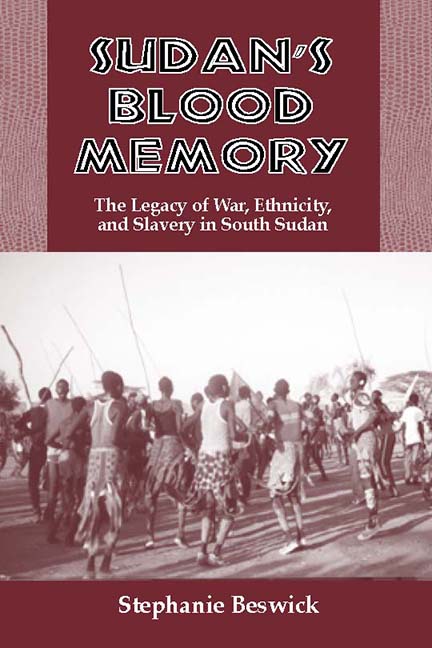Book contents
- Frontmatter
- Dedication
- Contents
- Maps
- Preface
- Acknowledgments
- A Note on Orthography and Languages
- A Note on Sources
- Map
- 1 Introduction
- 2 Geography and Brief History of Sudan
- 3 The Changing Nilotic Frontier
- The Ethno-Historical Formation of Southern Sudan
- The Ascendancy of the Dinka in Southern Sudan
- Foreign Intrusion and Its Consequences
- 15 Eighteenth-Century Slavers and Traders
- 16 Nilotic Chaos: Dinka, Nuer, Atwot, and Anyuak
- 17 Politics and Stratification among Stateless Peoples
- 18 Summary and History
- 19 Legacy of the Precolonial Era
- Notes
- Glossary
- Bibliography
- Index
16 - Nilotic Chaos: Dinka, Nuer, Atwot, and Anyuak
from Foreign Intrusion and Its Consequences
Published online by Cambridge University Press: 23 July 2019
- Frontmatter
- Dedication
- Contents
- Maps
- Preface
- Acknowledgments
- A Note on Orthography and Languages
- A Note on Sources
- Map
- 1 Introduction
- 2 Geography and Brief History of Sudan
- 3 The Changing Nilotic Frontier
- The Ethno-Historical Formation of Southern Sudan
- The Ascendancy of the Dinka in Southern Sudan
- Foreign Intrusion and Its Consequences
- 15 Eighteenth-Century Slavers and Traders
- 16 Nilotic Chaos: Dinka, Nuer, Atwot, and Anyuak
- 17 Politics and Stratification among Stateless Peoples
- 18 Summary and History
- 19 Legacy of the Precolonial Era
- Notes
- Glossary
- Bibliography
- Index
Summary
“The Nuers are the only group of people who are capable of assimilating Dinkas; no other group does this. The majority of Nuer are Dinka … but they won't admit they are Dinka.”
Gordon Matot Tut, Ciec Ador DinkaMost scholars of the modern-day Sudan are aware that there has been a long historical conflict between the Dinka and their closely related Nilotic neighbors, the Nuer. However, the relationship between these two is an enduring mystery, particularly as the Nuer today comprise approximately 70 percent of peoples of former Dinka origin. For example, Evans-Pritchard estimated that as much as 75 percent of the Lou Nuer were of Dinka descent. Yet, the question of the original forefathers of the Nuer is still open to debate. Even the Dinka and the Nuer do not agree on this issue. Further, the Luo have become very much involved in this discussion because many now believe that the original Nuer may, in fact, have been one of the several Luo groups previously resident in the region centuries ago, prior to the Dinka arrival. A subsidiary event also concerns the major body of the Atwot, considered to be closely related to the Nuer. This chapter covers this debate and catalogues the events that led many Dinka to change their ethnic identification to that of Nuer. Further, a discussion of the Anyuak, a number of whom were absorbed into the Nuer and Dinka amalgams, also follows.
The Origins of the Nuer: The Debates
Ray Kelly and Peter Newcomer suggest that the Nuer are an ethnic group born entirely of the Dinka. Much of their evidence comes from linguistic studies; glottochronological analysis yields a separation date between the Dinka and Nuer at around 85 A.D. Other scholars, however, strongly disagree. Mohamed Riad, for example, suggested that the Nuer, like the Shilluk, are of Luo origin. He cites oral histories of the Nuer who claim that they originated from a barren waterless country northwest of their present homeland in a region they identify as Kwer-Kwong. It is remembered that a leader, Gau, married Kwong, giving birth to Gaa, who became the most important Nuer leader, the Land Chief, acquiring the title of “Chief of the Leopard Skin.”
- Type
- Chapter
- Information
- Sudan's Blood Memory , pp. 164 - 174Publisher: Boydell & BrewerPrint publication year: 2004



